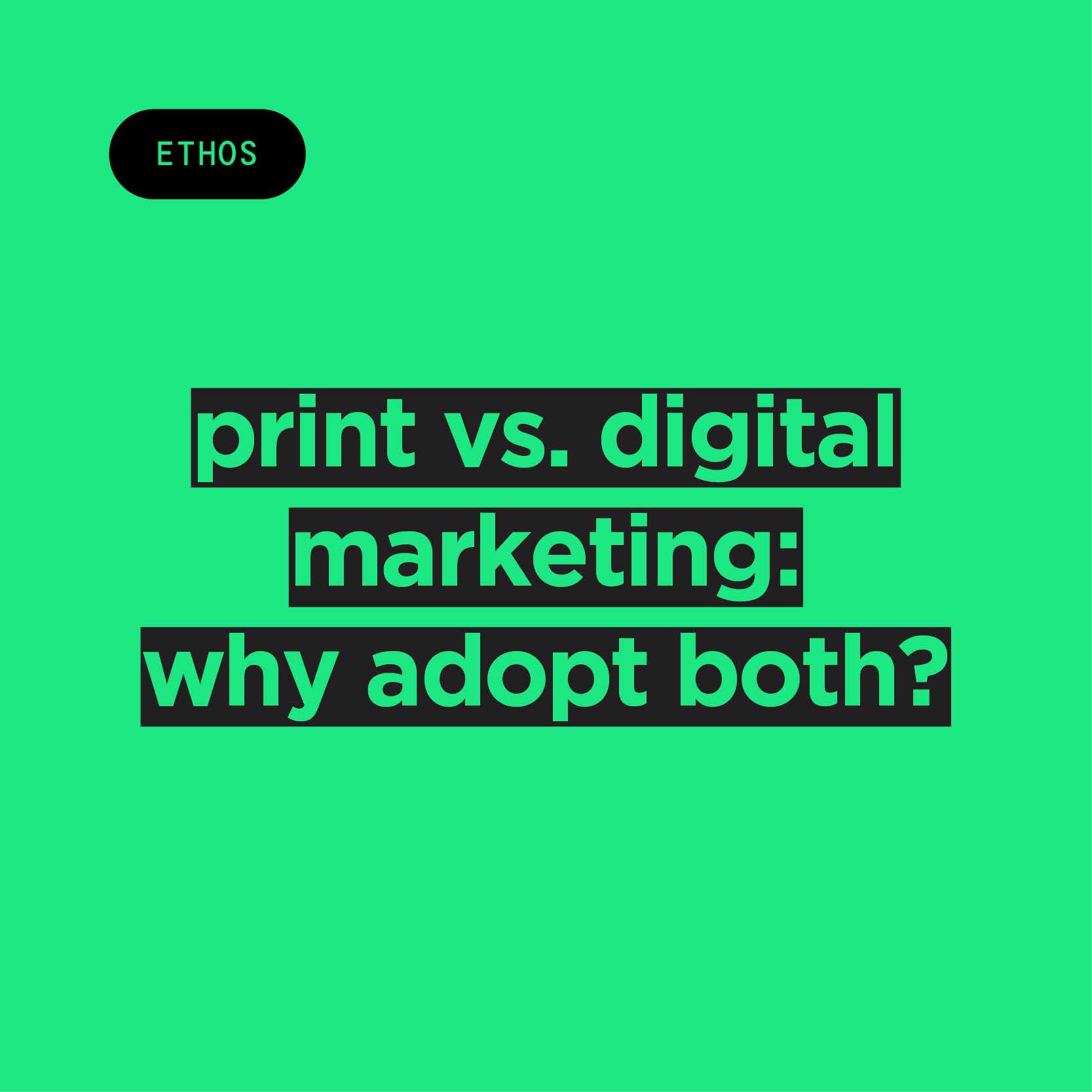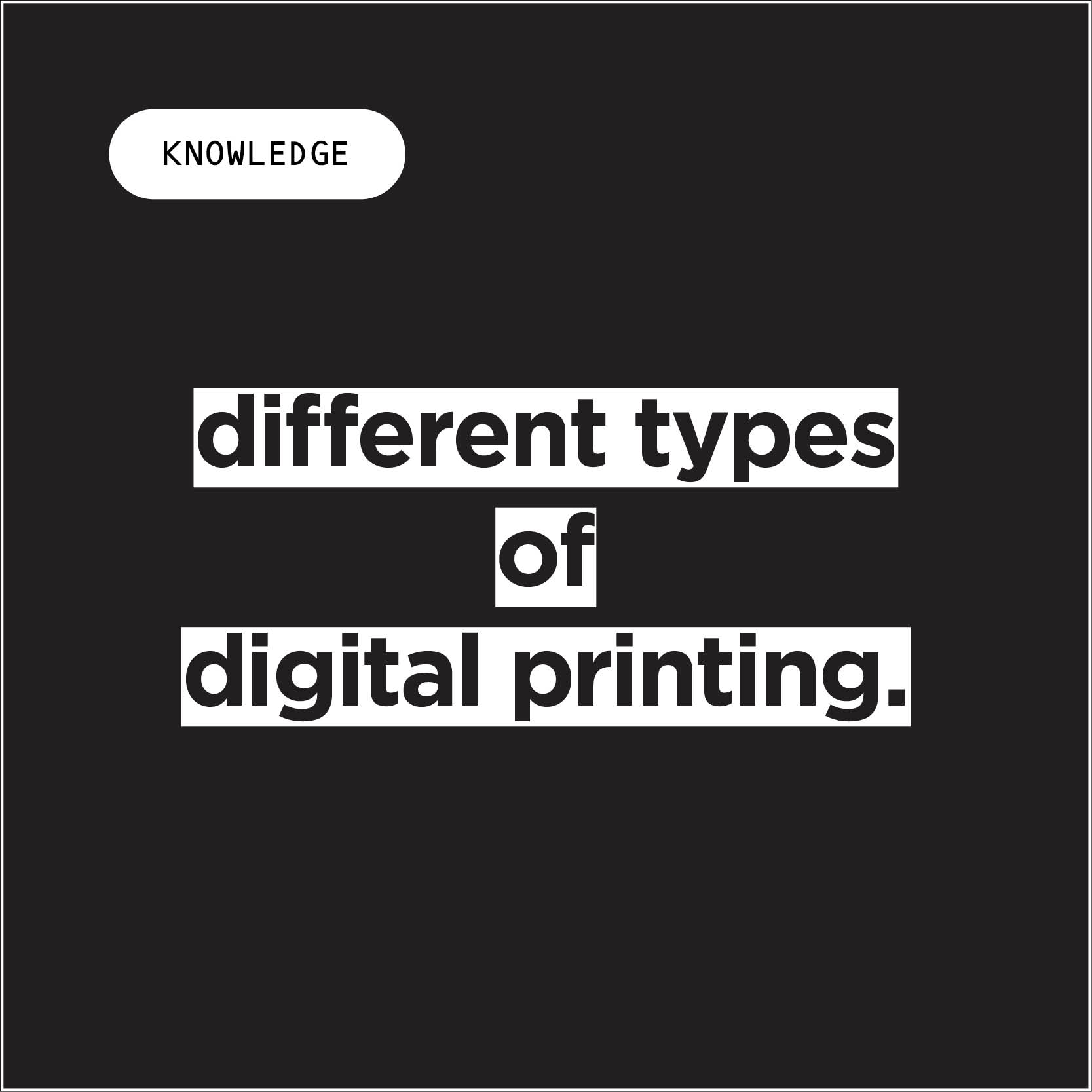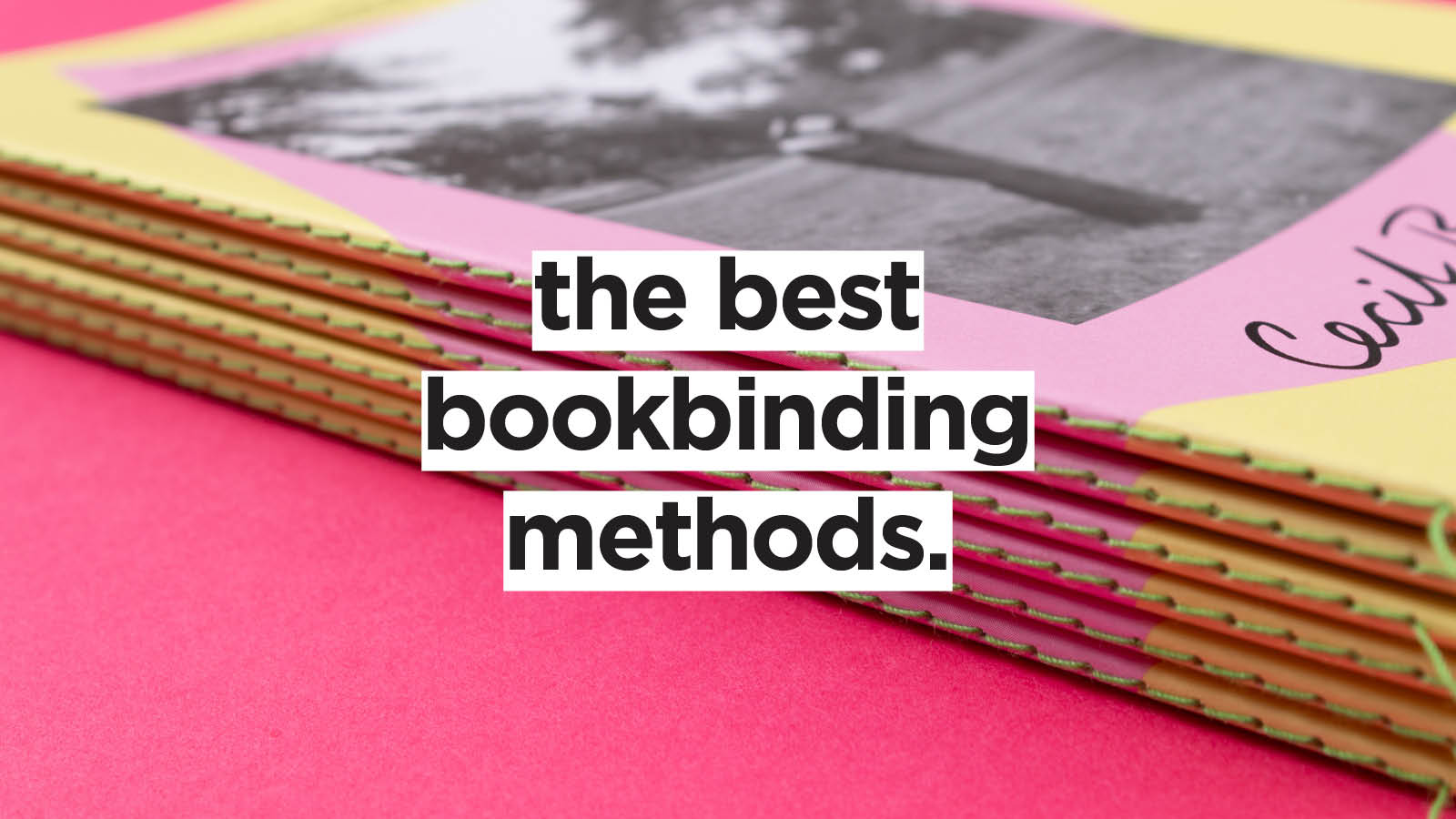
There would be no books without bookbinding.
This century-old craft has evolved from a simple need (collating sheets of paper securely with a cover) to a proper art form capable of complex and creative results.
Since its invention in the Roman Empire during the 1st century AD, bookbinding has evolved in so many fascinating ways, featuring a wide variety of methods and techniques. With all these options (and such a rich history!), It’s understandable to feel a bit overwhelmed when it comes to selecting the ideal binding method for your next project. That’s where Jump comes in to lend a hand!
The binding methods we offer at Jump
Here at Jump, we offer a variety of bookbinding methods to meet all your printing needs. From Coptic stitching to naked binding, here are the bookbinding services we provide.
Saddle stitch
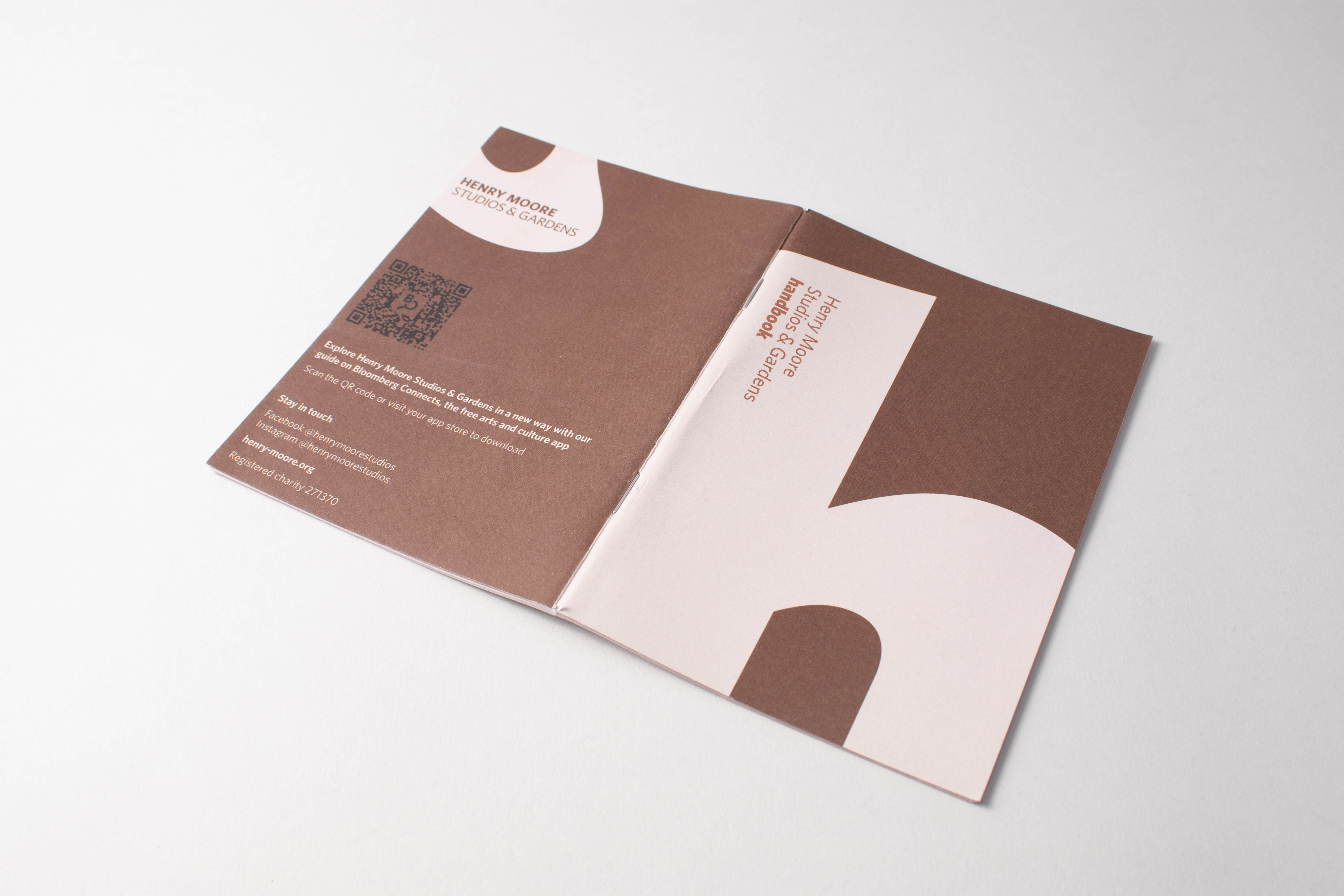
Saddle stitching is likely the simplest binding method! It just involves securing the folded pages together with staples, making it easy and efficient. Perfect for smaller books like brochures, magazines, or catalogues, saddle stitching is as uncomplicated and practical as it gets.
Perfect binding: EVA vs PUR
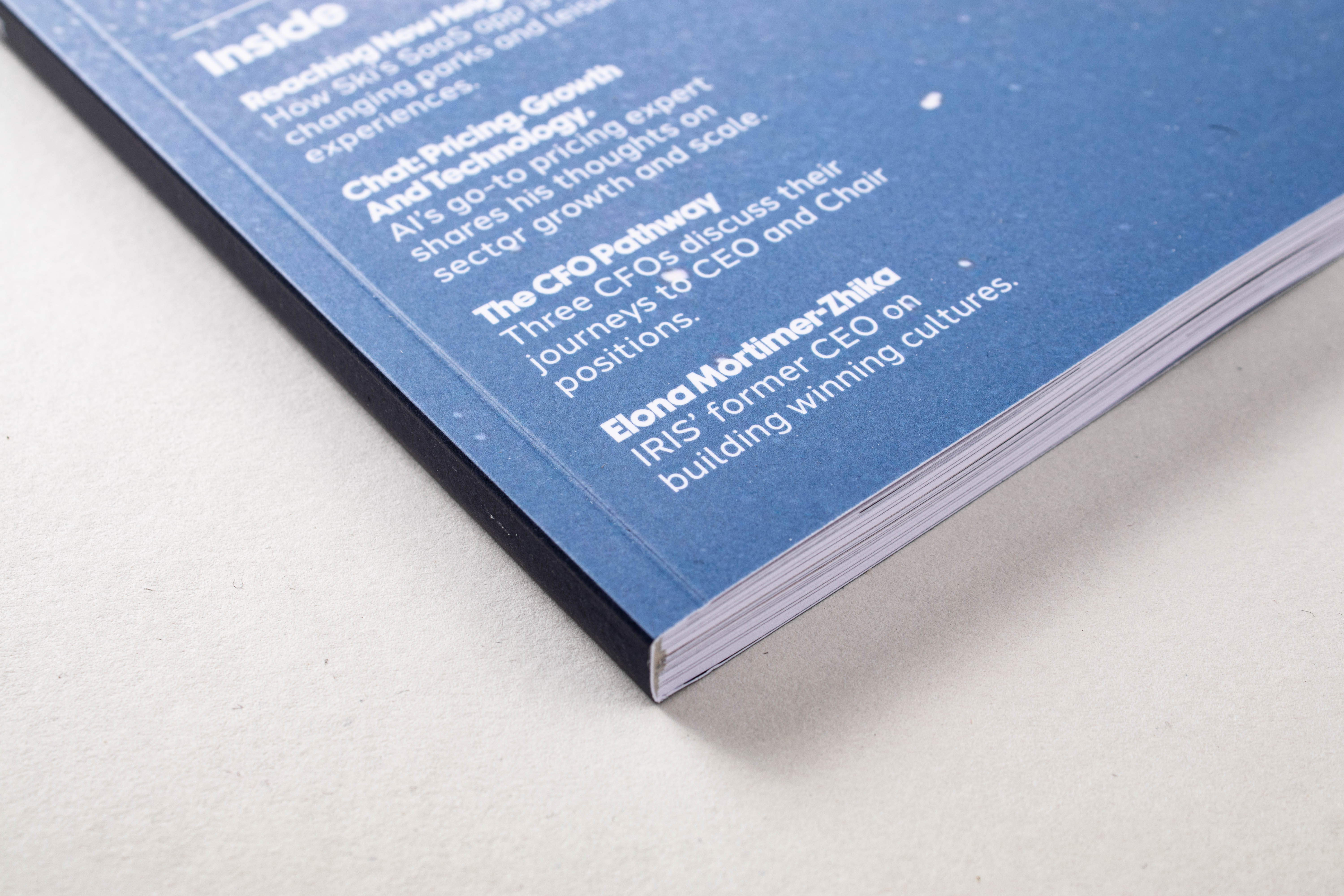
PUR and perfect binding—what’s the difference? In principle, they’re the same: Both use a paperboard or heavy cover stock to attach pages to the spine with glue. These binding methods also offer many of the same advantages: stackable, versatile, flexible page count, printable spine…
The difference lies in the type of glue used: “regular” perfect binding uses EVA (Ethylene Vinyl Acetate), while PUR binding uses, well, PUR (Polyurethane Reactive).
EVA is more cost-effective and allows for faster processing times, albeit at the expense of strength and durability.
PUR, on the other hand, is 2.5 times stronger than EVA, making the final product more resistant to wear and tear, as well as allowing for heavier paper and larger page counts. The downsides are increased costs—as PUR glue is more expensive than EVA—and longer processing times to accommodate the extended curing period.
Does this mean that PUR is better than EVA? Or vice versa? Neither is universally true: depending on your project’s scope (a quick catalogue? A durable and professional booklet?), we’ll be able to help you decide which option is best for you.
Hardcover / Hardback / Casebound
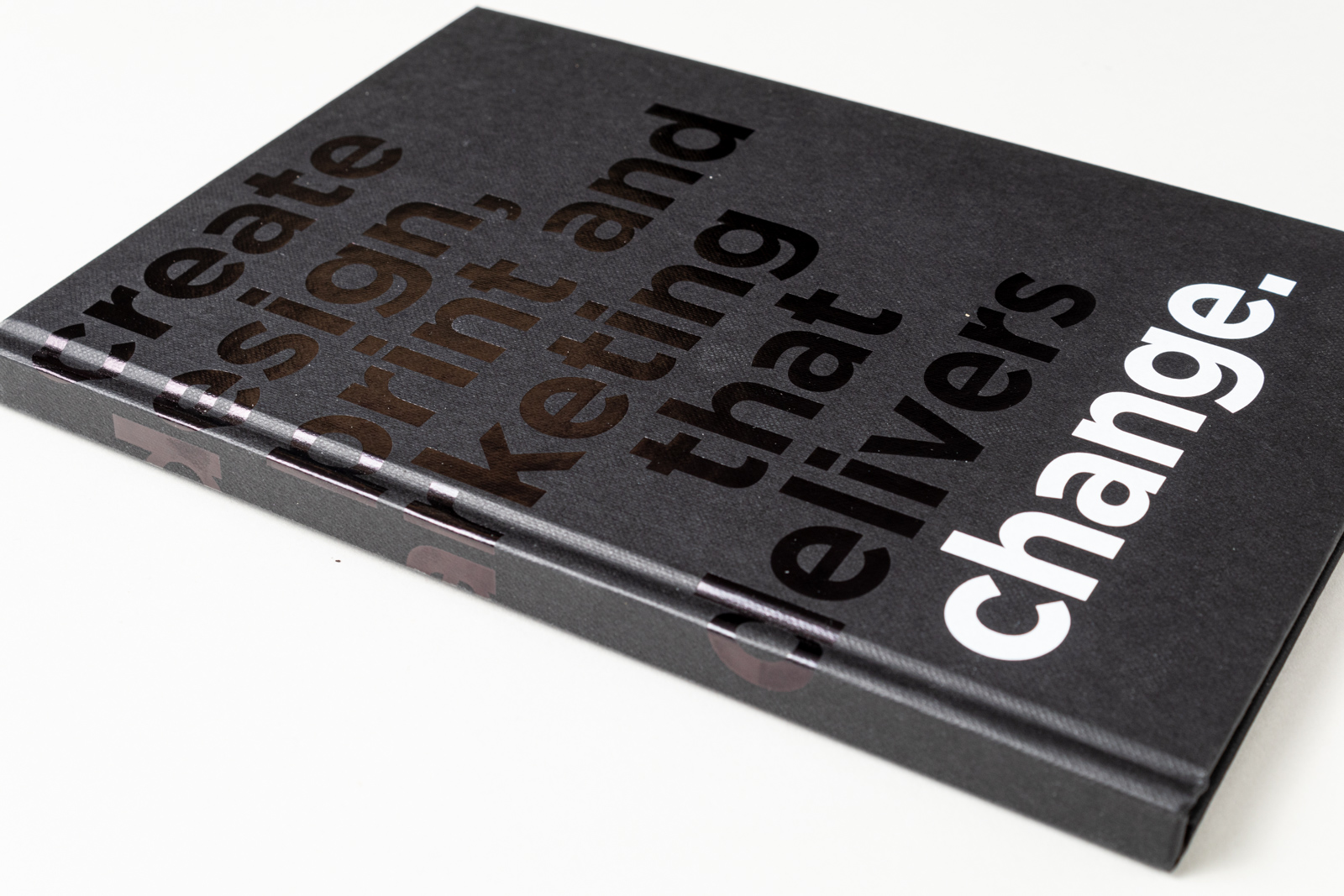
No matter what you call it, case binding is by far the most premium bookbinding method available.
These sturdy books are either section-sewn or bound from single sheets—moreover, they’re often produced with hollow backs and visible joints to allow for comfortable page-flipping. From special foils to premium finishing materials, we’ll make sure your hardcover books are truly special.
Perfect for anything high-value or with a long shelf life (like premium art catalogues or coffee table books), hardcover books are more expensive, but 100% worth the investment.
Singer sewing
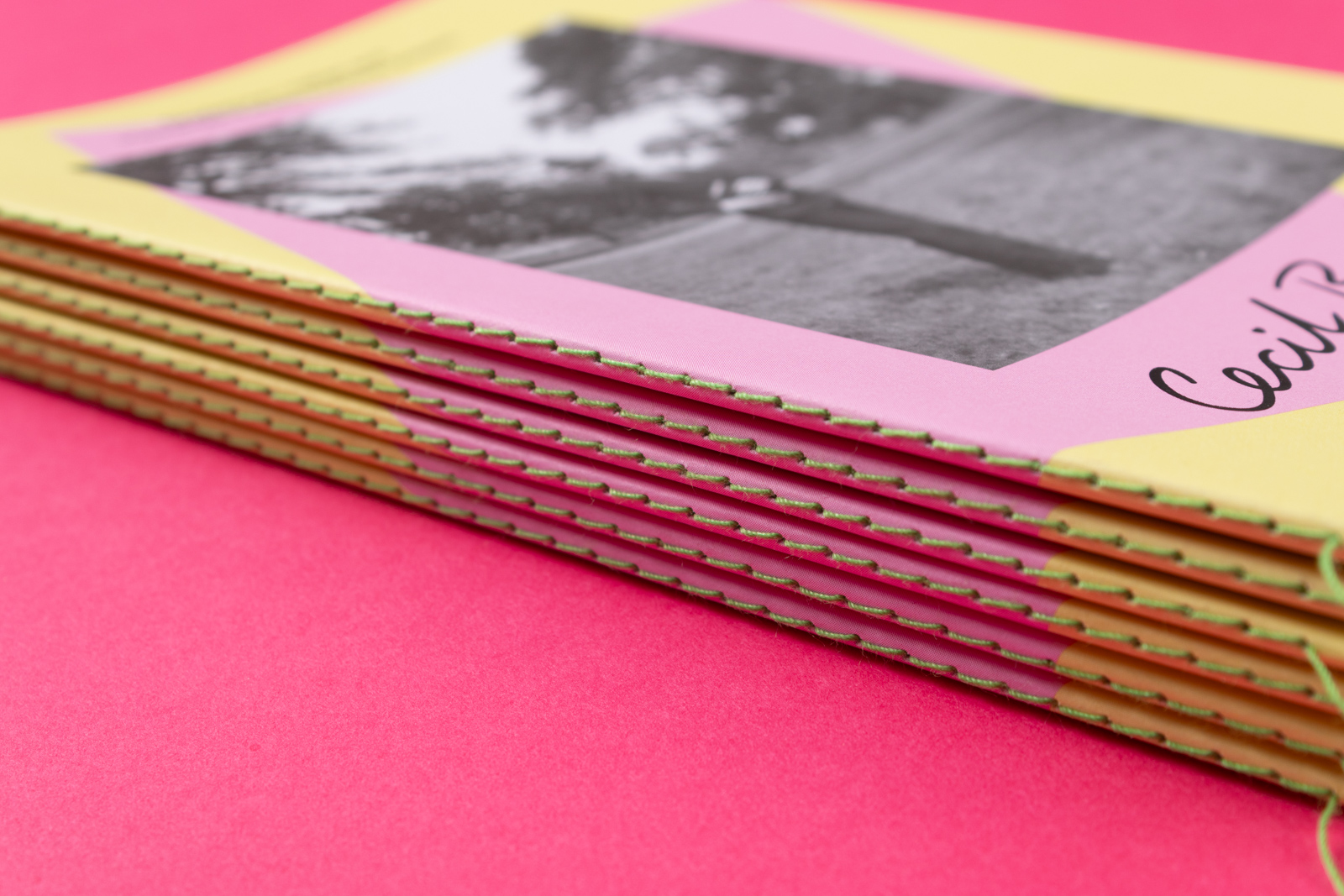
Singer sewing marries simplicity with whimsy and creativity. With this method, a single section of pages is bound together by a single thread of any colour, which is stitched through folded pages at the spine.
Singer sewing is an excellent choice for single-section booklets, but it can also be combined with hardcase and paperback binding. In this process, each small section is sewn together and then attached to the cover, either using endpapers for hardcase or opting for perfect binding for paperback.
Section sewing
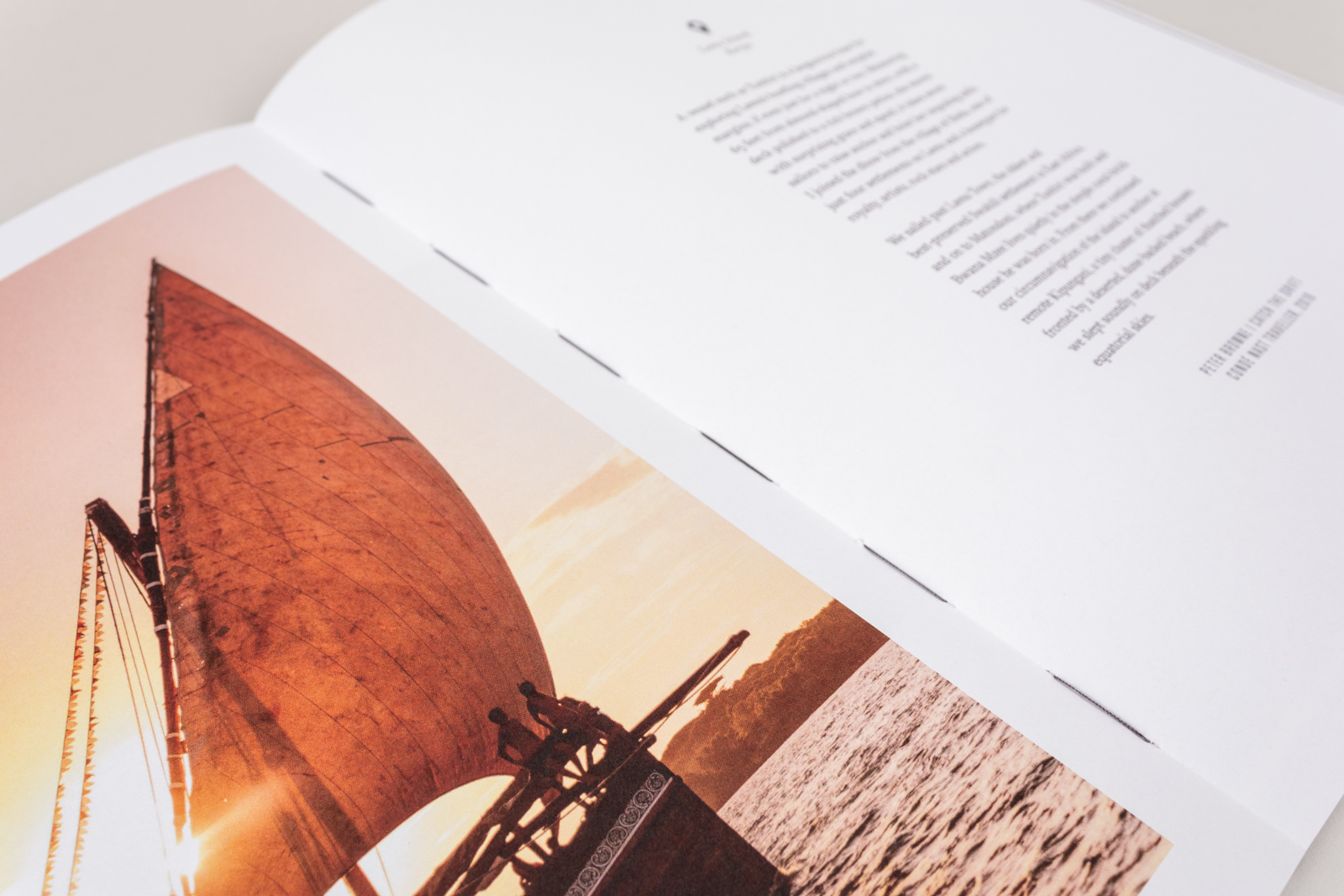
At first glance, it might look exactly like perfect binding, but don’t be fooled: section sewing is a premium, durable option in its own right. In this method, each section of your book (called “signature”) is sewn together and then glued to the cover. This creates sturdy books that open easily and remain flat without needing to be held open.
This method is ideal for books that will need to withstand a lot of manhandling (like cookbooks) and for heavier-weight, coated papers.
Naked binding
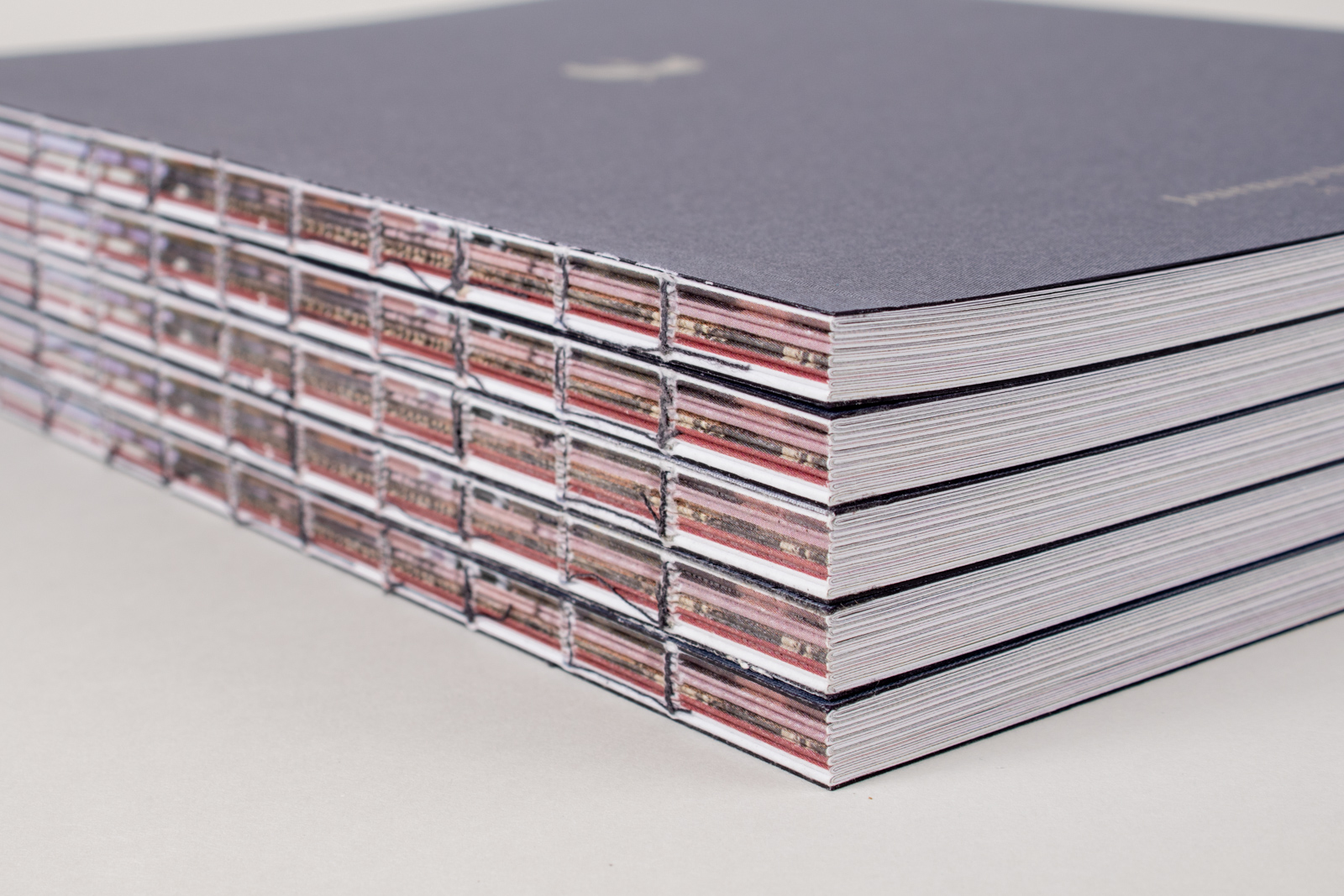
Love section and Singer sewing, but want to take it up a notch? Naked binding is the solution for you!
This method is exactly like section sewing with an exposed edge: instead of glueing each sewn signature to a cover, they’re held together by a clear drying adhesive and trimmed, thus exposing the spine and threads—hence the name “naked”.
This binding method shines when paired with vibrant and bright cloth covers and threads, and is an excellent option for creative and bold projects, like art books.
Coptic binding
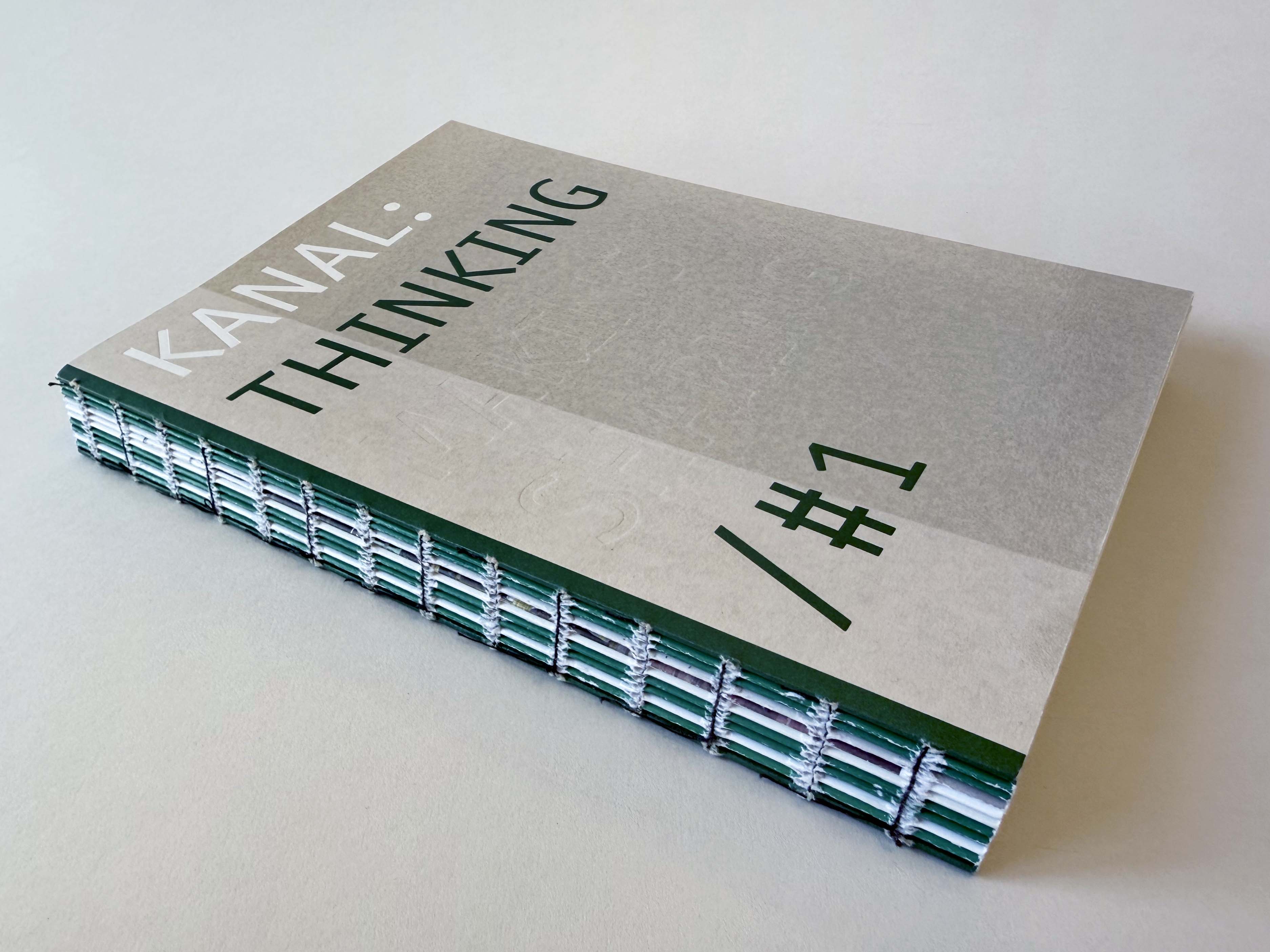
One of the oldest binding methods still used today, Coptic binding involves sewing the signatures together with thread, creating an exposed spine with a chain-like stitch. The covers are usually hard and sewn to the first and last signatures.
The exposed spine and chain link stitching aren’t only signature features of Coptic stitching but can also be used as striking and unique decorative elements.
This method is ideal for any project that requires easy lying flat, such as journals, watercolour books, and sketchbooks.
French binding
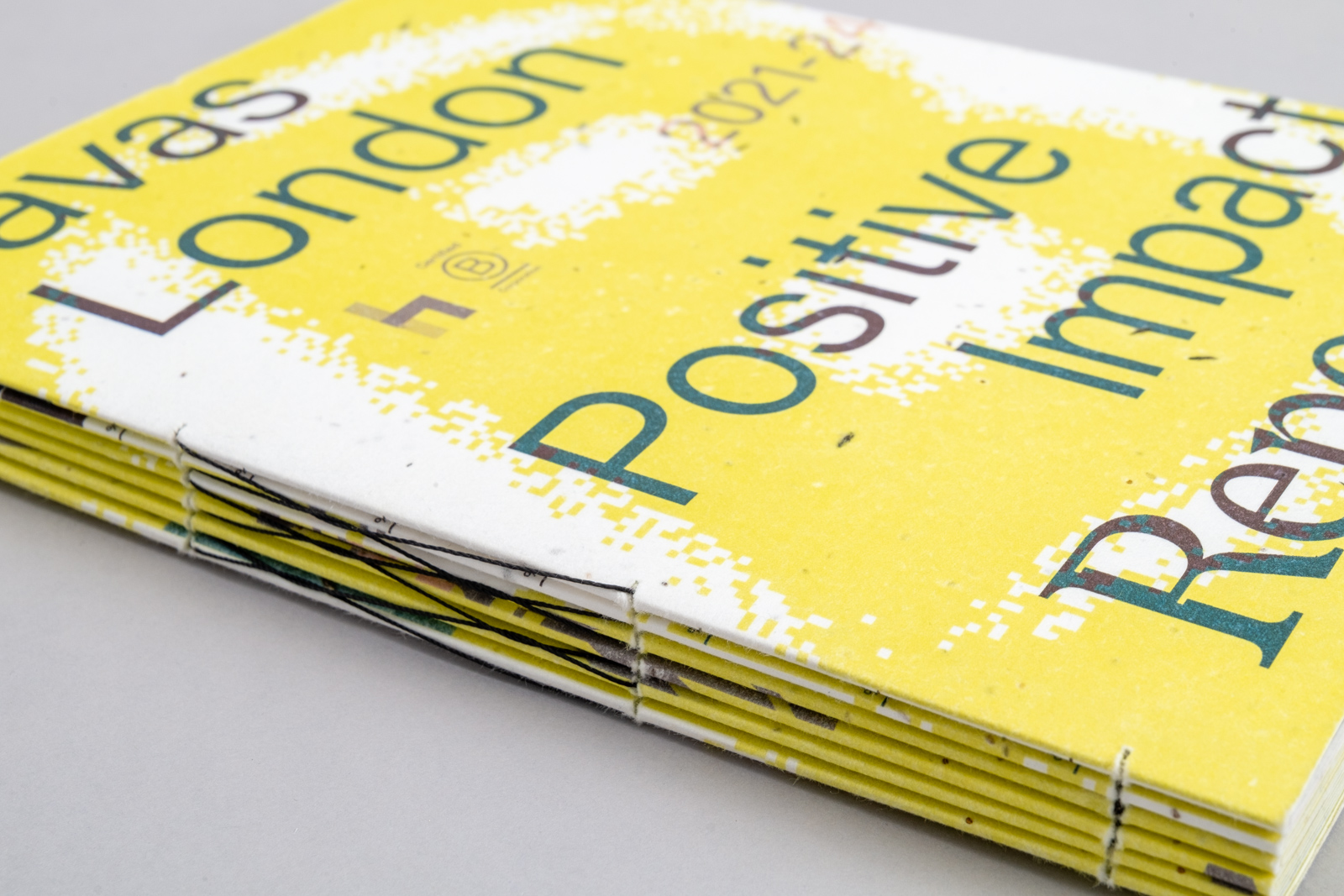
Similar in looks to Coptic binding, French bookbinding is another traditional technique with a long history. Unlike its Coptic counterpart, in French binding, single leaves (instead of signatures) are sewn together at the spine by piercing holes in it.
With French binding, the thread details at the spine become the star of the show: each stitch pattern offers a unique linear design that adds personality to your project.
Wiro vs spiral binding
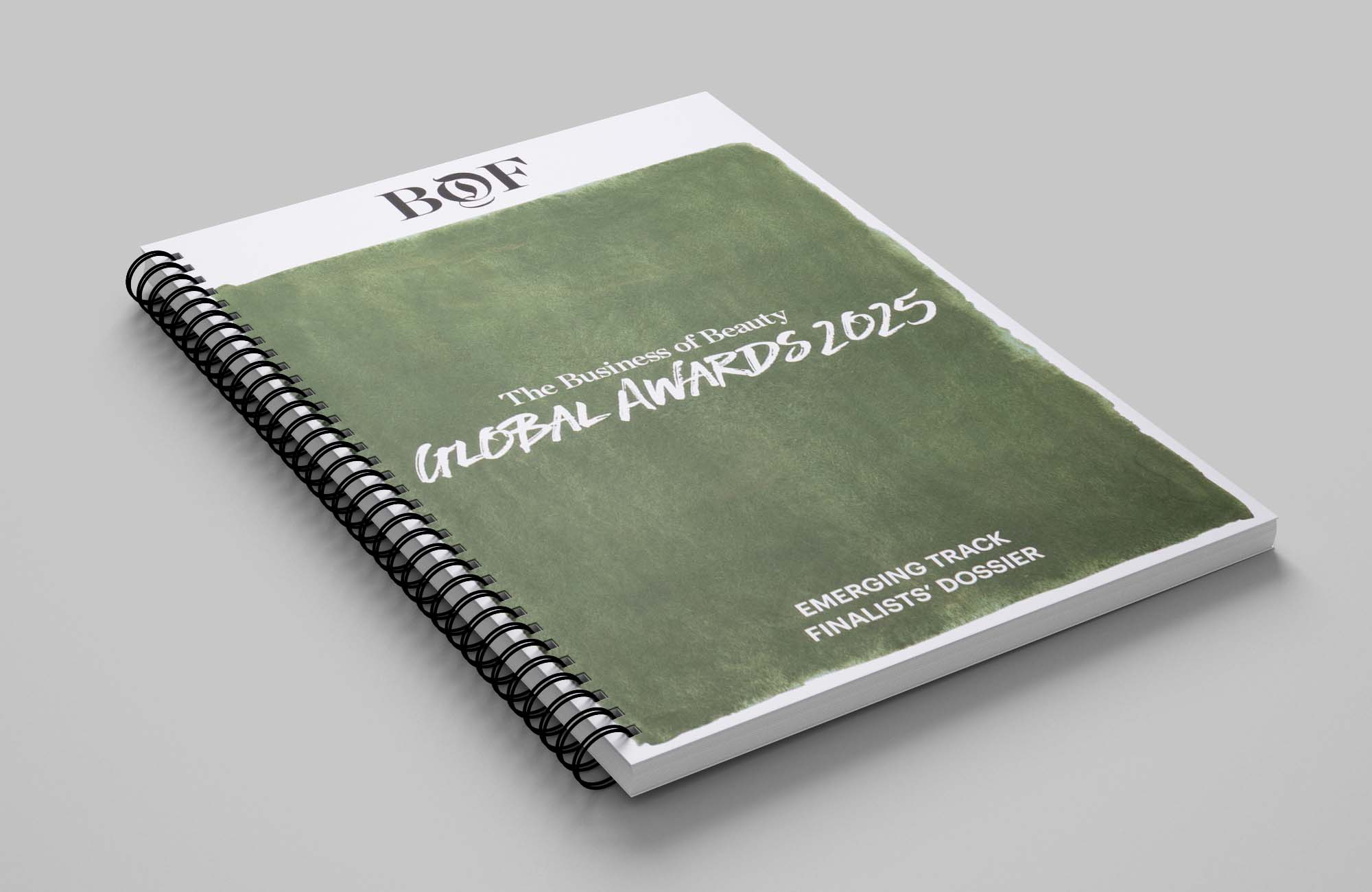
A staple with school workbooks and commercial documents alike, wiro and spiral binding are extremely popular and can be used in a wide range of creative and artistic projects.
What is the difference between wiro and spiral binding? Wiro binding uses a metal spiral with double loops (which is generally considered more premium and polished), while spiral binding features a continuous coil in plastic or metal.
Their key feature is that both wiro and spiral binding allow the pages to flip 360 degrees, making them ideal for notebooks. The only downside? Neither method allows for very thick books that might make flipping the pages difficult.
Interscrew/Chicago screw binding
No-nonsense and durable, interscrew binding (also known as Chicago screw binding) is a more professional-looking alternative to ring binding.
In this binding method, holes are drilled in the paper stack with great precision, and the stack is then fixed with binding screws between two covering boards.
Interscrew binding allows for pages to be removed and added as needed, making it the ideal choice for office documents or restaurant menus.
Choosing the right binding method for your project
Now that we have gone over the different binding techniques we offer at Jump, the big question is: how to choose the right one for your project?
To pick the most suitable binding method for your book, there are three key aspects you should take into consideration:
1. Purpose and expected usage: Firstly, think about your audience and your book’s intended use. A hardcover or section-sewn volume, for example, is perfect for repeated use or as a special edition keepsake. Interscrew binding, on the other hand, is the best choice for office documents or restaurant menus, as it allows for adding and removing pages as needed.
2. Cost and turnaround time: These will be two key factors driving your choice of binding method. For instance, thanks to their versatility, perfect binding and saddle stitch binding are ideal for projects where these aspects are paramount—short-run publications, event programmes, magazines, calendars, etc. Perfect binding is a speedy and cost-effective option that maintains both a professional look and practical appeal.
3. Desired aesthetics: Some binding methods, like Coptic book binding, add an interesting and unique look, and lend themselves to aesthetics-driven projects. If you’re going for a specific vibe, wiro or Chicago binding can also make for a bold choice for lookbooks, portfolios, and art books.
